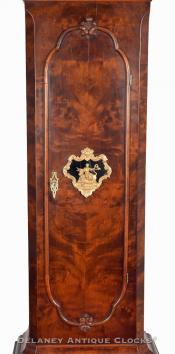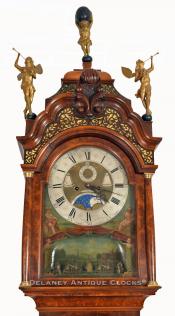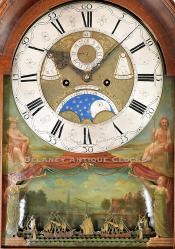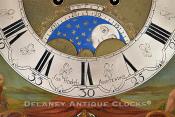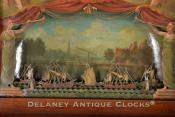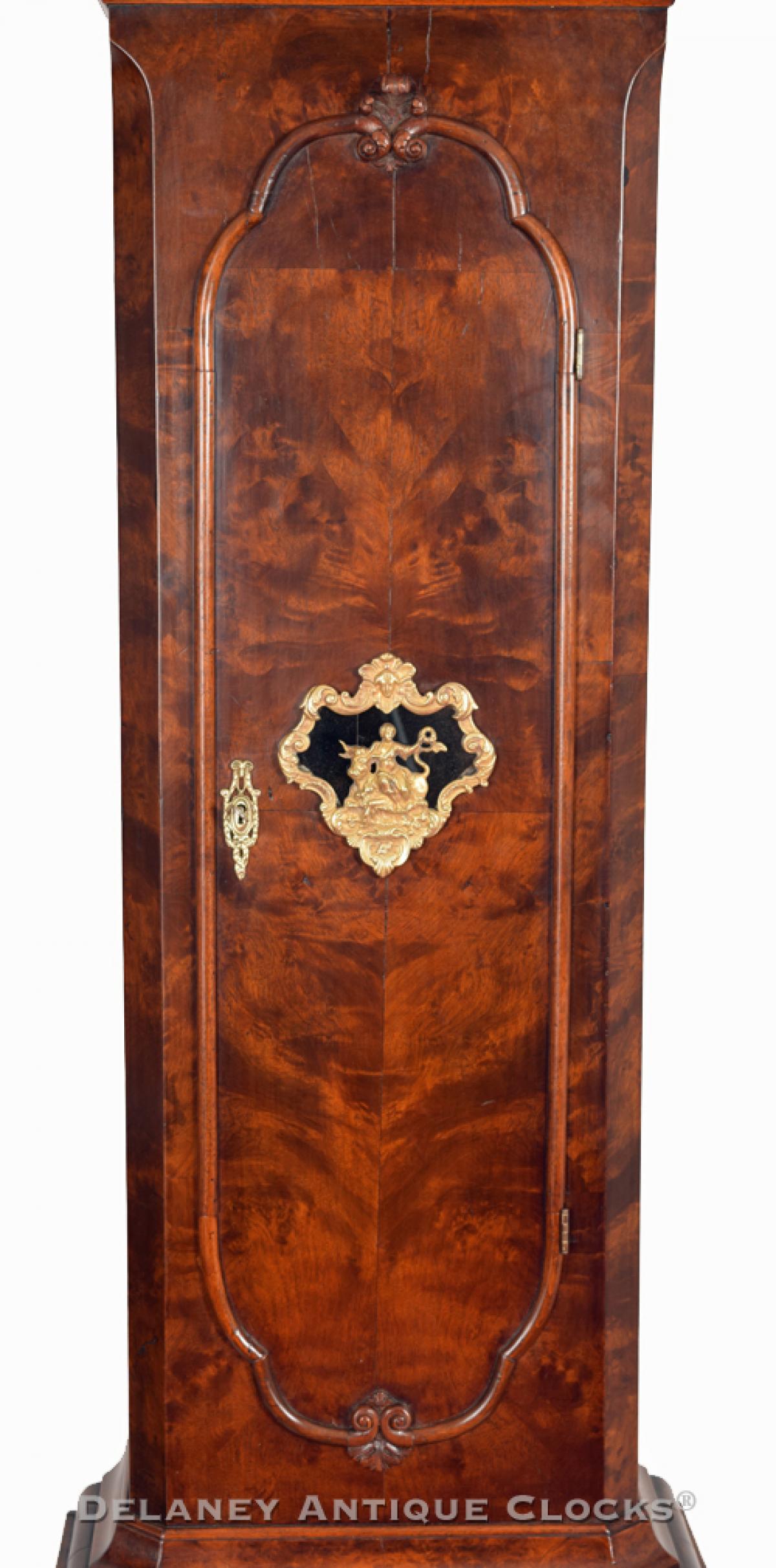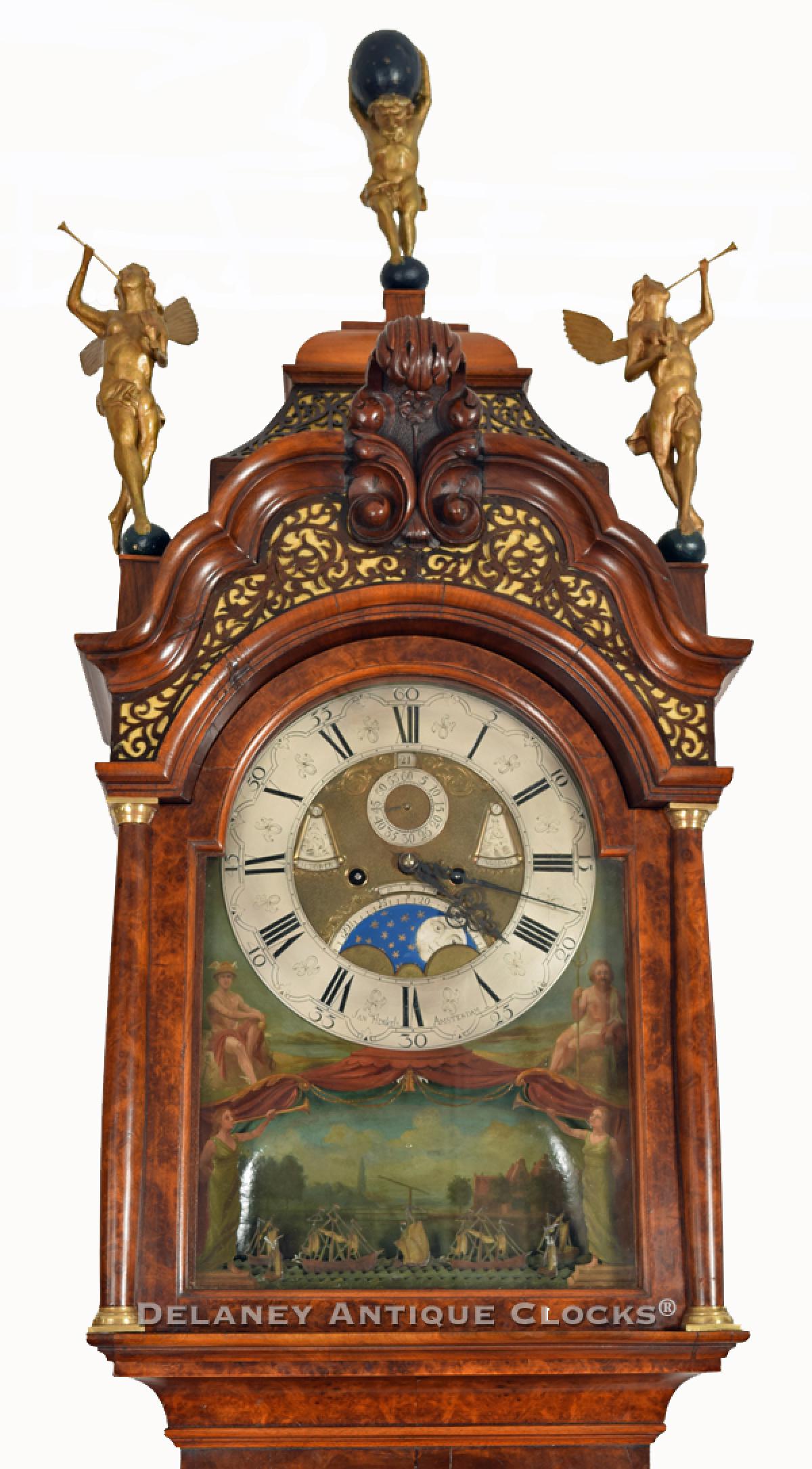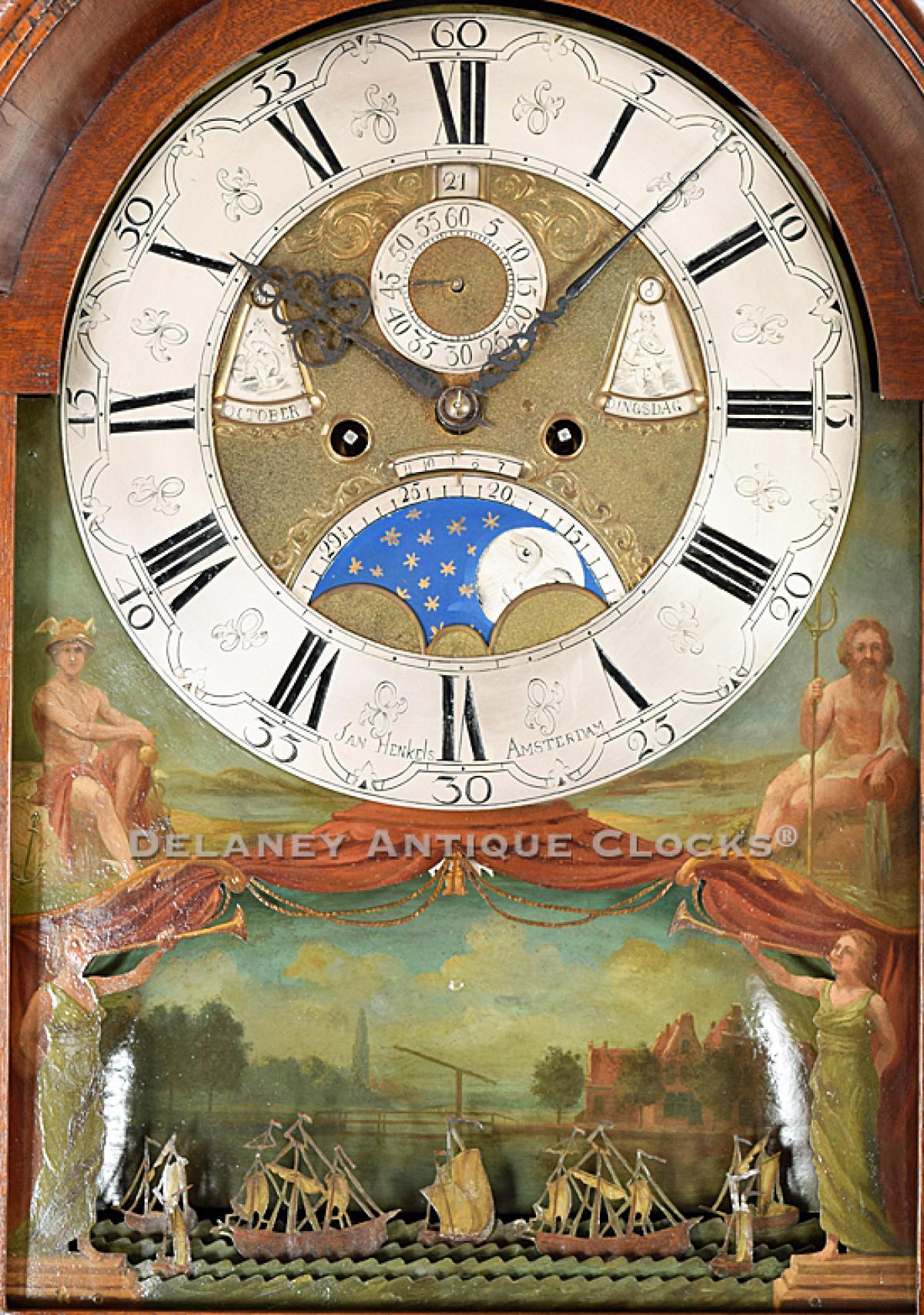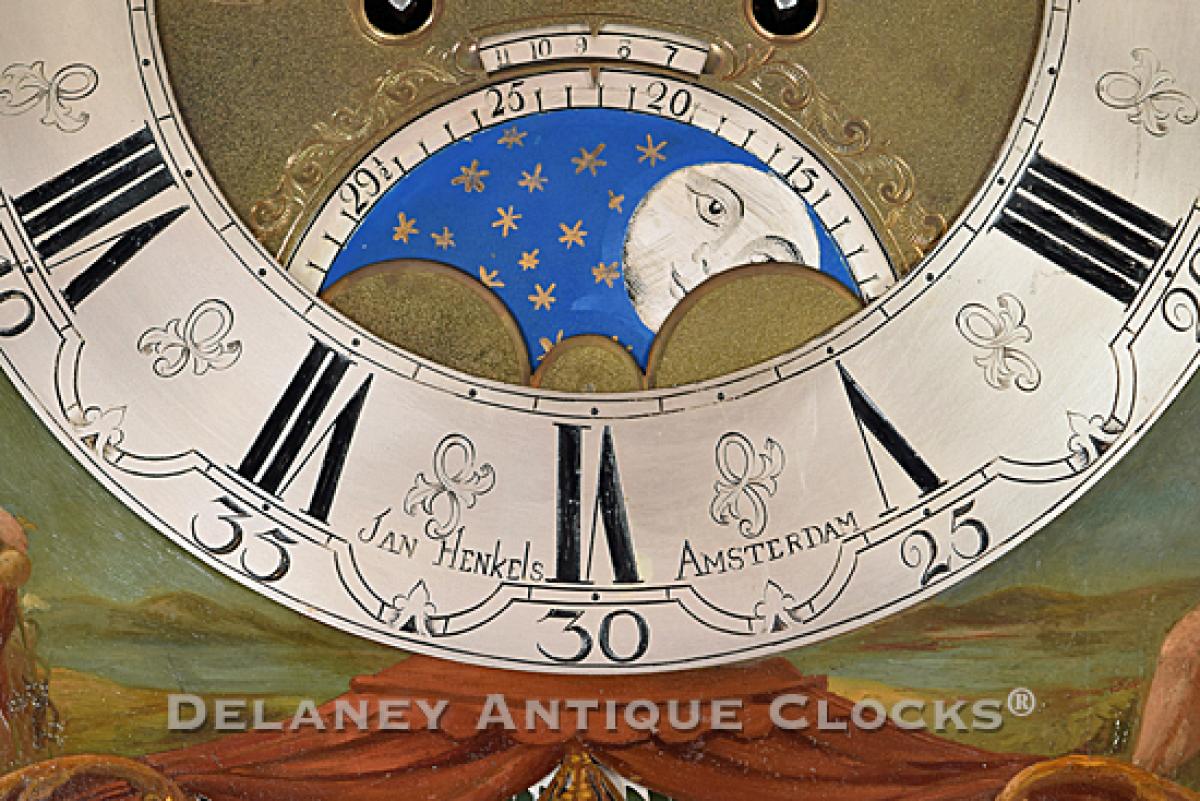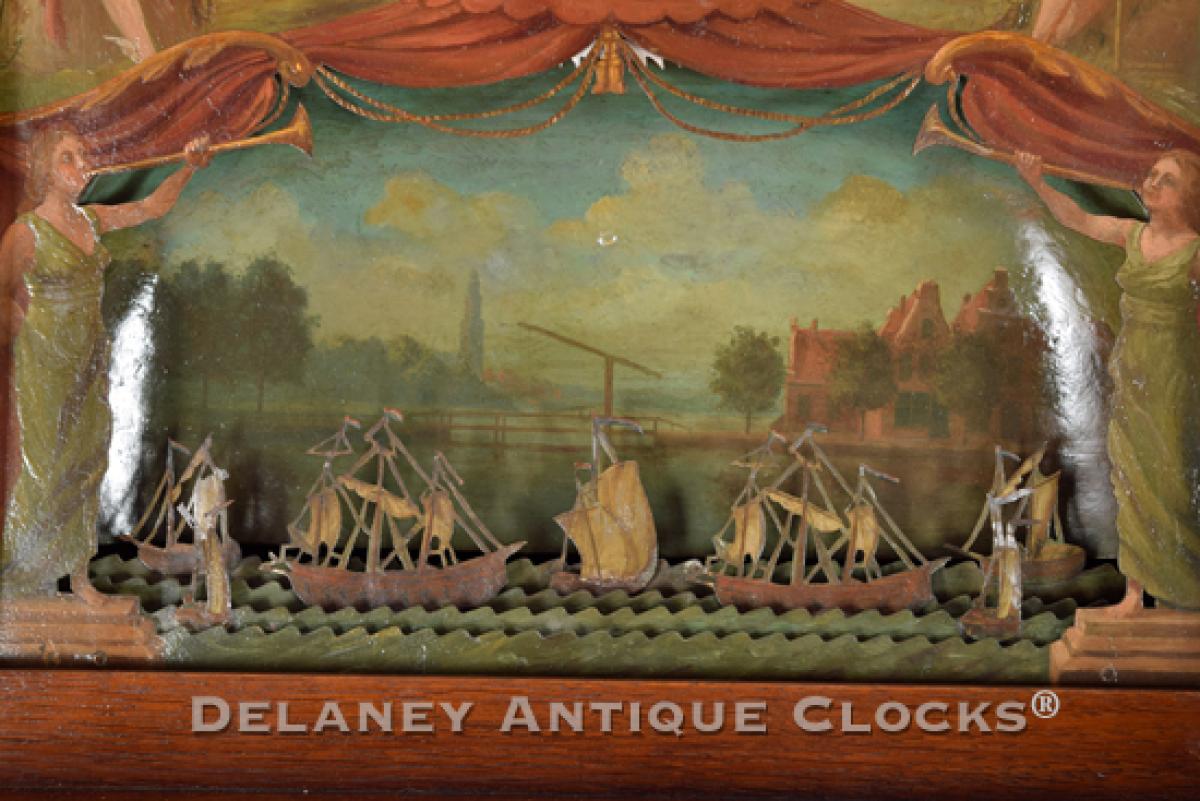An impressive burl walnut long case clock with an automated brass dial signed "Jan Henkels - Amsterdam." ZZ-10.
Jan Henkels is listed in G. H. Baillie's, Watchmakers & Clockmakers of the World, Volume 1, as working in this location circa 1780. He is also listed in J. Zeeman's book "De Nederlandse Staande Klok" and is recorded as being born in 1722. and died in 1778. It appears he was working in Amsterdam by 1767. He was famous for his automaton clocks which he made in the second half of the 18th century.
This brass dial features a skillfully engraved chapter ring in the Dutch style. This time ring is finished with a silver wash. The hours are demarked in Roman-style numerals, and the 5-minute markers are executed in Arabic form. The Maker's name and working location can be found engraved in the lower section of this chapter ring. A seconds dial is positioned above the center arbor. Above this is a window that displays the numeral day of the month. The center section has been textured and features several decorative engravings. The triangular window inside the time ring on the left displays the month and the number of days in that month. The matching window located on the right shows the day of the week and the Zodiac sign associated with that day. Colorfully painted classical figures are depicted in these locations. Below the center arbor is a moon phase disk or lunar calendar. The hour of the high tide in Amsterdam is also indicated in this location along the perimeter. The lower section of this dial is iron and colorfully hand-painted. It features a nautical scene that incorporates automation. This scene is painted in a three-dimensional format. The background depicts a country setting. In the foreground is the nautically themed display. Along with the movement of the pendulum, all seven ships move in a gentle rocking motion. In addition, the waves move from side to side. Two women are positioned on either side of the scene. They are holding horns. Curtains or drapes frame the top of the scene. Mercury, with his winged hat, is depicted sitting on the left. Poseidon, with his trident in his right hand, is depicted on the right.
The time and strike movement is constructed in brass. It is designed to run for an eight-day duration before rewinding. It is good quality. It is a Dutch design and features a Dutch striking format. This movement has two separate bells. The hour is struck on the large bell at each hour. On the half-hour, the coming hour is struck on the smaller bell. Interestingly, this clock also strikes on the first and third quarters. This movement strikes one blow in the first quarter on the larger bell. The movement strikes one blow on the smaller bell on the three-quarter hour. Weights power all of this action and motion. Both are lead and covered in a brass sleeve.
This clock case is constructed in oak and is veneered in outstanding burlwood selections. These are thoughtfully laid out over the design of the case. The proportions are excellent. This case stands on or is raised on two large ball and claw feet that feature powerfully carved jointed fingers. The feet are applied to a boldly formed base molding. The base section is a full bombe' design that is highlighted with a delicate satinwood string inlay. The waist is long and narrow, with canted corners accentuating the case's narrow proportions. The nicely shaped waist door is trimmed by applied molding. Finely carved floral patterns are applied to this door's top and lower sections. The waist door centers an opening that is framed with a fancy gilt metal frame. Father time or Chronos is incorporated into this design. He is depicted as a bearded gentleman with long flowing hair. He wears two fully feathered wings and is sitting next to an hourglass. The door is veneered with book-matched flitches. The bonnet is an arch-molded stepped pediment that features a detailed carving. The blind frets are backed in a lightly colored silk cloth. The bonnet door is arched at the top and is fitted with glass. Large bonnet columns are decorated with brass capitals that are applied to the frame. Surmounting this case are three-period figural finials. The center one depicts Atlas. He is supporting the Universe on his shoulders.
This clock was made circa 1770. In its present form, this clock measures approximately 105.5 inches tall to the top of the center finial.
Inventory number ZZ-10.



